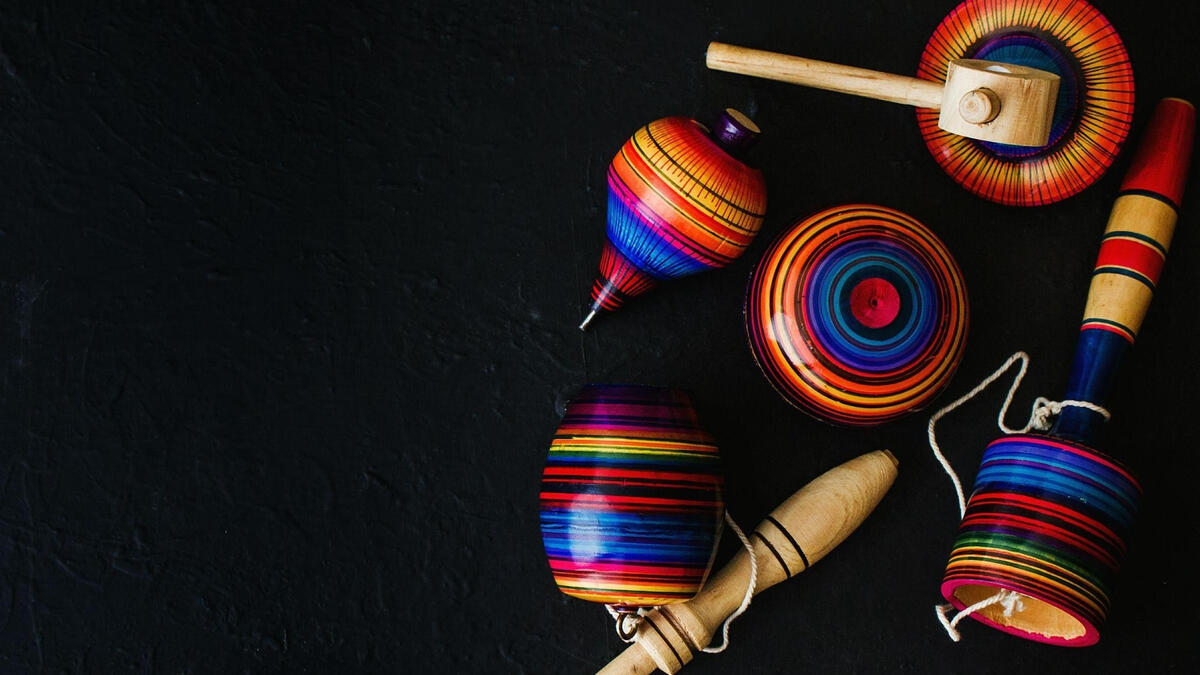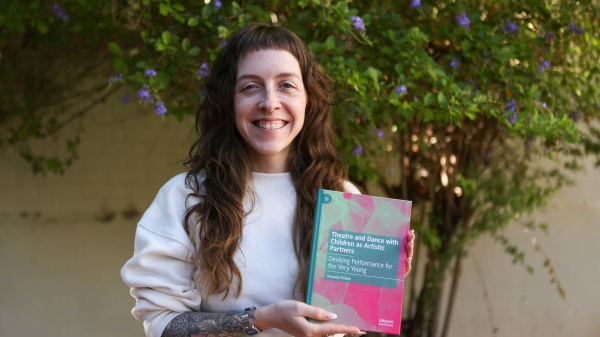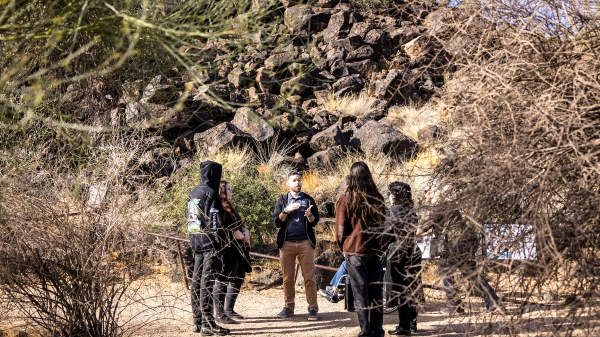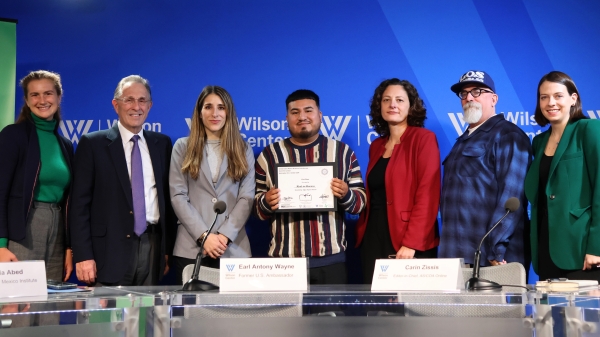Sanford School professor, culture expert shares insights for Hispanic Heritage Month

Throughout history, culture has been one of the underlying forces driving human behavior. Like an invisible hand, it shapes actions, systems and identities, determining whether someone “belongs” as part of one community or is an outlier.

Associate Professor Jose Causadias
Associate Professor José Causadias of the T. Denny Sanford School of Social and Family Dynamics at Arizona State University is a culture expert with over a decade of research intersecting cultural influence with human well-being. Studying topics like cultural rituals, youth development and the interplay of culture and biology, Causadias has investigated how culture and cultural rituals shape mental health by helping groups resiliently withstand challenges.
Causadias has a specific interest in Hispanic groups, having studied how cultural values such as familism, or the importance of family, lead to greater well-being. Growing up with strong cultural influences from his own community, he saw how traditions and group values affected his own daily life and the lives of those around him.
Throughout his research, Causadias has questioned why culture has such an impact on communities, and how we define it. He says that culture is a fuzzy topic, with some defining it by group differences and others by values and practices. Causadias, however, has suggested a more concrete definition of culture based on what he calls the “p-model,” or people, places, practices, power and purpose.
In honor of Hispanic Heritage Month, we asked Causadias about his definition of culture, the importance of culture and trends in his academic research.
Editor's note: Responses have been edited for length and clarity.
Question: How would you define culture?
Answer: I define culture as a system of people, places, practices, power and purpose. These five components create and are created by each other, and we cannot understand culture without them.
Our culture is about who we are as individuals and groups (people), the history of where we live and we come from (places), how we behave and celebrate our beliefs (practices), why those in charge create hierarchies (power) and how we fight for change and find joy (purpose).
When I think of the culture of Puerto Ricans in New York, Mexican Americans in Phoenix and Cuban Americans in Miami, for example, I think of proud communities who have transformed and enriched their cities (people), have a complex history here and in Latin America (places), who share and create different languages (practices), are affected by inequalities within and outside our communities (power), and find meaning in celebrating and challenging our traditions (purpose).
Q: Why is culture an important concept?
A: Although it means different things for different people, the concept of culture is valuable. When we think about Latinxsgender-neutral term for a person from, or whose ancestors were from, a Spanish-speaking land or culture or from Latin America, for example, we often hear the idea that we are a mosaic and not a monolith, meaning that there are a lot of differences among us. For example, we use different names to call ourselves, such as Hispanic, Latine, Latinx and many others. I use Latinx because it is not binary and includes LGBTQ+ people.
With all these differences, what do Latinx people have in common? Why put us under the same umbrella? One rationale we often hear is that we share the same culture, which is partially true. But thinking that all Latinxs are the same can be a problem because we have different experiences. That is why we also need to think and measure culture, ethnicity, race and national origin separately.
Q: How does culture play a role in the well-being of Hispanic or Latino people, and how has this evolved over time?
A: There is a large body of theory, research and interventions that show that Latinx cultures play an important role in the well-being of Latinx people, especially in the lives of children and adolescents. ASU graduate student Karina Cahill has done outstanding research showing how familism, the values that emphasize respect and dedication to the family, are associated with positive mental health and doing well in school.
Additionally, Latinx culture continues to change over time, as it is challenged and revised by each generation. For example, we see new ways Latinx youth celebrate quinceañera, updating this rite of passage to include boys and transgender girls. We are also trying to understand how the COVID-19 pandemic affected our communities and changed our cultures.
Q: What are some common misconceptions or stereotypes about this culture that you encounter in your research?
A: There is an idea that there is a lack of knowledge about our culture when in fact, there is a rich body of knowledge about many Latinx cultures. Sometimes people cannot access that knowledge because they are not investing enough time to search, or they are only looking into one scientific discipline. Other times it is because the research was published in other languages. Maybe the knowledge has not been published at all, but it is part of the oral traditions of a community. You may not know about it if you are not familiar with or part of that community.
Q: Previously, you’ve called for a review of cultural research methods due to implicit assumptions. What are these assumptions and why is it important to be careful about the way we study culture?
A: There’s a notion that you can use any method to study Latinx cultures and that the results will be valid, but validity is the degree to which evidence and theory support the interpretation of results. If the theories and the measures we use in research are not centered on Latinxs, then the interpretation of the findings of the study are not valid.
Another assumption is that we can study culture well just by using questionnaires and self-reports, but in reality, we also need methods such as interviews, photovoicePhotovoice is a visual research methodology that puts cameras into the participants’ hands to help them to document, reflect upon, and communicate issues of concern, while stimulating social change. and ethnography.
Q: You’ve previously researched the need for innovation in diversity and inclusion in social sciences. What do you think needs to happen next in cultural studies — especially surrounding Latino groups?
A: I wish I knew! I find the best and most innovative ideas about Latinx cultures when I read the work of our Latina scholars who often are also activists fighting for our communities. I am teaching a class this fall on Latinx children, youth and families, and I look forward to learning with my students from the work of Nilda Flores-González, Cristina Mora, Tanya Katerí Hernández, Rachel Valentina González and many others.
Top photo courtesy Adobe Stock
More Arts, humanities and education

ASU professor explores theater, dance for young children in new book
Arizona State University Assistant Professor Amanda Pintore believes in the artistic capacity of very young children. She's hoping to spread that awareness to others with the recent publication of…

Petroglyph preserve celebrates 30th anniversary with ancient, modern tales
The Deer Valley Petroglyph Preserve provides a beautiful walk through a pristine desert where chuckwalla lizards are as plentiful as the cacti that comes in many shapes and sizes.It’s also a step…

Kaleidoscope short film contest inspires powerful binational filmmaking in its second year
“We come to this country not to steal anybody’s jobs but to take advantage of the opportunities that the rest ignore. We’ve been taking care of the American soil for many years. But our hands will…